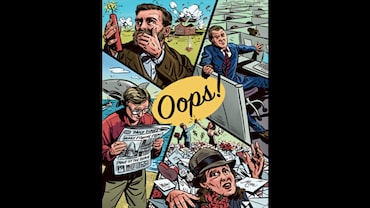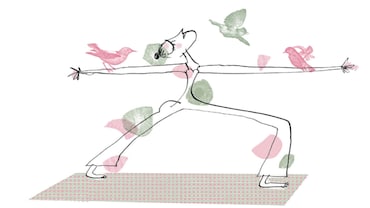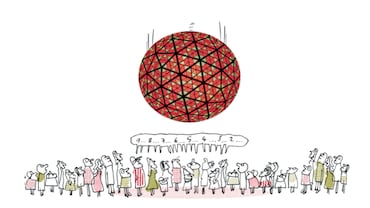- HOME
- /
- Odds and Ends
- /
- Who knew
- /
World Chocolate Day: A Not-So-Brief And Bitter History Of This Sweet Treat
As you unwrap your next bar of chocolate, or sink in your teeth into a chocolate confection, remember, to consume chocolate is to gulp down its entire bittersweet chequered history
 Chocolate making in Mexico (Illustration via Wikimedia Commons)
Chocolate making in Mexico (Illustration via Wikimedia Commons)
Thanks to the power of advertising, today chocolate is the undisputed symbol of comfort, sensuality, gratification and love. Established as an essential part of several modern-day rituals, this guilty pleasure is immensely loved across world. On World Chocolate Day, let’s take a look at this treat’s history—which, at places, can prove to be a little hard to swallow.
1. Chocolate is made from the fruit of the cacao trees which are native to Central and South America. These fruits contain around 40 cacao beans, which are then dried and roasted to produce chocolate. Wondering why we haven’t mentioned cocoa beans? The Spanish word for chcahuatl, which is what the Aztecs called these beans, is cacao. It is believed that English traders, who took the beans to Europe, misspelled the word, giving us the term cocoa.
2. Though it is unclear what circumstances led to the discovery of the bean and its delicious magic, it has been established that chocolate existed in Mesoamerica from around 1400 B.C. Ancient Olmec pots and vessel sdating back to that period have been found with traces of theobromine (a stimulant compound found in both chocolate and tea). Until the 16th century, chocolate only existed in that region, and in a form quite unlike what we see today—the beans were ground and mixed with cornmeal and chilli, to prepare a bitter, frothy drink. Sweetened chocolate came into existence only when Europeans invaded the Americas.
 A Mayan chief forbids a person from touching a can of chocolate (Image via Wikimedia Commons)
A Mayan chief forbids a person from touching a can of chocolate (Image via Wikimedia Commons)
3. Chocolate, through the ages and across civilizations, has been cherished. Both, the Mayans and the Aztces believed that it was a gift from the heavens. A feathered serpent god, called Kukulkan by the Mayans and Quetzalcoatl by the Aztecs, is believed to have gifted the divine bean to humans. The Aztecs, in particular, held chocolate in great reverence, using it in scared rituals of birth, marriage and death. The Aztecs even used it in their rituals of sacrifice, giving the victims, who understandably, felt too desolate to join in the ritual dancing a gourd filled with the drink to lift their spirits! They rewarded victorious soldiers with these beans and even used them as currency—a single bean could fetch you a tamale, while 100 beans could be traded for a healthy turkey.
4. Chocolate travelled across the Atlantic in 1519, when Spanish explorer Hernando Cortes was received in the court of the Aztec king Montezuma at Tenochtitlan. The King, mistaking the invader as the reincarnation of a deity, welcomed him with a banquet replete with 50 jugs of the drink, poured out in golden cups. The bean travelled back with Cortes to Spain, where it acquired a reputation of being an aphrodisiac due to the salacious accounts of native customs associated with chocolate, provided by the Missionaries. Some other accounts, however, trace the first evidence of cacao being brought to the Spanish court to the friars who escorted the Kekchi Mayans to meet Prince Phillip. The clergymen would have had regular access to the bean, as it was common for the Mesoamericans to give them as offerings in places of worship.
5. Chocolate wasn’t an immediate rage—its bitter taste meant that it was initially used as a medicine for ailments like an upset stomach. There are even written accounts describing the drink as “a bitter drink for pigs”, but once it was sweetened with honey, sugar or vanilla, it became a rage. By the 17th century, chocolate became a fashionable drink across Europe—homes of aristocrats even had dedicated chocolate-ware. Chocolate remained a preserve of the wealthy until the steam engine was invented which made mass production of it possible in the late 1700s.
 Drinking chocolate became quite the rage among the European nobility in the 17th and 18th centuries. (Illustration by Pietro Longhi, via Wikimedia Commons)
Drinking chocolate became quite the rage among the European nobility in the 17th and 18th centuries. (Illustration by Pietro Longhi, via Wikimedia Commons)
6. Things started changing in 1828, when Dutch chemist Coenraad van Houten invented the ‘cocoa press’ which enabled him to separate the fat from the cacao bean, leaving behind a fine powder, which could be added to milk or water—what we now call hot chocolate. The invention also meant that it was now easier and cheaper to produce chocolate and larger number of people could enjoy it. It was in 1847, when British chocolatier J. S. Fry and Sons struck upon the idea of recombining the fat and liquor, and adding sugar and setting it in moulds, that the chocolate bar was born.
7. Like a lot of other things we enjoy—tea, coffee, tobacco—chocolate too, was grown and supplied on the back of slaves and indentured labour. Scores of African slaves and indentured labour were shipped to cacao plantations in South America to do the back-breaking work, enabling the imperial masters to enjoy the fruits of their labour. By 1773, cocoa beans were a major American colony import. By the 20th century, chocolate was a widely consumed treat, which meant that meeting the demand required large-scale cultivation of cocoa. The cacao tree can only be grown near the equator, which meant that cocoa production was shifted to West Africa—about 70 per cent of the world’s cocoa beans now come from the region.
8. This guilty pleasure continues to sustain itself on the back of unfair labour practices. The industry continues to see gross human rights violations and abuses. A host of plantations in West Africa, which form the bulk of the world’s supply of cacao beans, continue to use slave and child labour on their farms. According to a 2018 report by 15 European non-profit organizations, there are 2.1 million child labourers working in West Africa alone.






